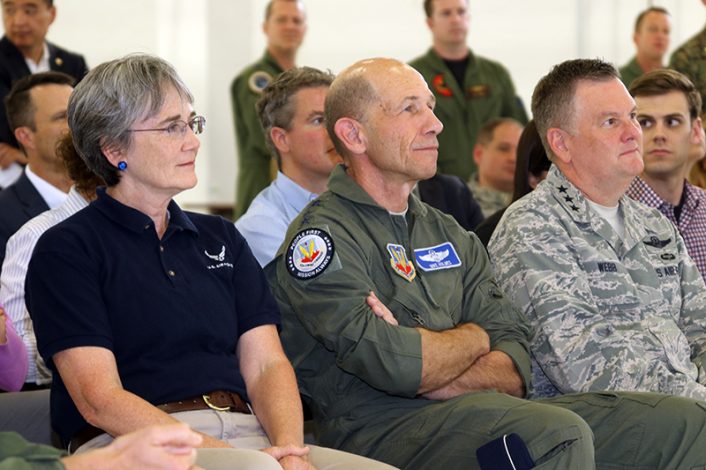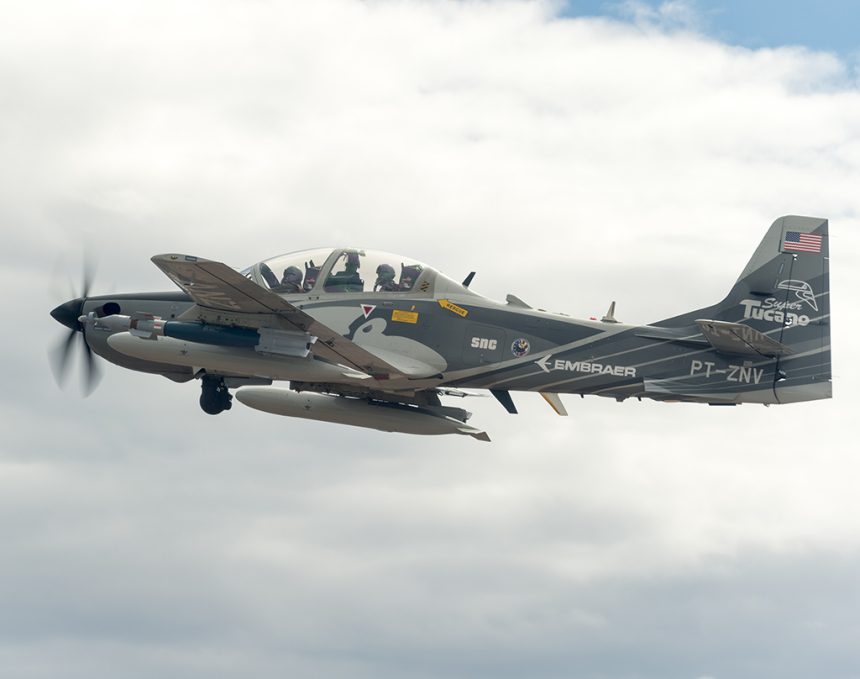Overall Light Attack Acquisition Project Continues Despite Accident.
Military.com’s Oriana Pawlyk reports that the innovative U.S. Air Force Light Attack Experiment has been halted following last week’s fatal crash of an Embraer A-29 Super Tucano light attack aircraft within the Red Rio Bombing Range at the White Sands Test Facility in Las Cruces, New Mexico outside Alamogordo.
The Light Attack Experiment is intended to test both a new evaluation process for some USAF acquisition programs and simultaneously provide functional analysis of small, tactical light attack aircraft that can be operated economically and efficiently for close air support and reconnaissance in an insurgent conflict. Most of the participant aircraft are single engine turboprops. The program is said to potentially compliment and economize other Air Force programs including the F-35 Joint Strike Fighter by offering a less expensive, more agile program architecture that is suggested to even include innovations in how the Air Force trains new pilots.
U.S. Navy pilot Lt. Christopher Carey Short, from Canandaigua, New York died in the crash on Friday, June 22, 2018 while flying the Embraer A-29 Super Tucano. Another crew member on board the two-seat light turboprop attack and trainer aircraft is being reported as injured after ejecting from the aircraft.
The Embraer A-29 Super Tucano that crashed is a successful, combat-proven light tactical trainer, strike and intelligence/surveillance/reconnaissance aircraft that is being evaluated in the Air Force Light Attack Experiment.
No cause for the accident has been reported and the cause of the accident is under investigation according to Air Force Public Affairs at Holloman AFB.
According to Pawlyk’s report, U.S. Air Force Air Combat Command commanding officer General Mike Holmes told reporters that, “The OA-X tests have been suspended amid the ongoing accident investigation, and will remain on hold until officials can decide if more testing is even needed.”
Gen. Holmes comments did not clarify specifically if the program will potentially move ahead to an acquisition phase without further testing, or, if the program may be suspended following this fatal accident.
Journalist Pawlyk reported in early December 2017 in a separate article for Military.com that Members of Congress were, at the time, eager to hear the findings of the Light Attack Experiment.
“During a Senate Armed Services Committee hearing on acquisition reform Thursday [in 2017], senators said they are hopeful the light attack aircraft, known as OA-X, procurement strategy may improve how future weapons systems are acquired,” Pawlyk reported.
General Holmes did go on to tell reporters, “I don’t think this will have a chilling effect on future experiments. Whenever you’re trying something new there are risks.”
The Light Attack Experiment is in Phase II of now, with evaluation flights being conducted mostly from Holloman AFB, New Mexico. The program was originally intended to run through July, 2018.
During a media event in 2017, journalists and observers were invited to Holloman AFB to see aircraft being evaluated in the Light Attack Experiment and gain insights into the Air Force’s potential concepts for acquisition. At the time, program leaders including General Holmes and Secretary of the Air Force Dr. Heather Wilson, emphasized that the program was not a “fly-off” competition, but an insight into potentially new processes for evaluating some new Air Force programs.

Reporters, including this writer, were scheduled to return to Holloman AFB in July to report on the Light Attack Experiment again as the program neared its completion.









